Early starts aren’t nice. They’re even worse when you wake up in a cold sweat imagining you’re trapped in Chernobyl and history has repeated itself. Thankfully, it became clear that hadn’t happened when I woke up, but it did leave me unable to get back to sleep from about 4am, four hours before my tour began. Perhaps that was my subconscious telling me that I was a little more apprehensive than I’d care to let on about visiting the site where one of the worst disasters in modern history took place just 33 years ago.
A quick disclaimer about this article – it’s going to be long. However, I’ve tried to condense my thoughts as much as possible to create something concise, coherent, and informative too.
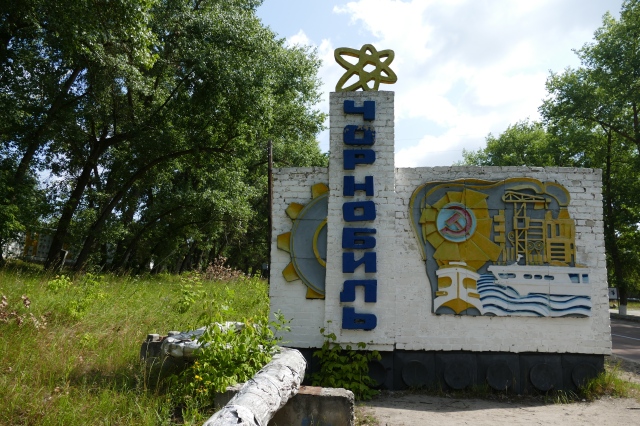
What happened at Chernobyl?
If you haven’t yet watched the HBO series (there might be spoiler alerts here, as it was supposedly pretty accurate), Chernobyl was a nuclear power plant in Northern Ukraine. In the early hours of the 26th April 1986, thanks to a combination of design flaws and human error, reactor core number 4 of the power plant overheated.
Along with the Fukushima Disaster in Japan, it’s one of only two nuclear disasters rated at 7 on the International Nuclear Event Scale. Chernobyl was arguably the most destructive event in recent history, leading to widespread death and illness in what was at the time the Soviet Union. It was one of the events that eventually led the USSR to collapse. The modern-day countries worst affected by Chernobyl were Ukraine and Belarus, which has a border very close to the exclusion zone.
The 30km Chernobyl exclusion zone has officially been open to tourists since 2011. However, the concrete sarcophagus that now covers reactor number 4 was only completed in 2015, meaning that you can get much closer to the epicentre of the accident. Since then, the popularity has boomed, and it’s only expected to increase more after the TV series.
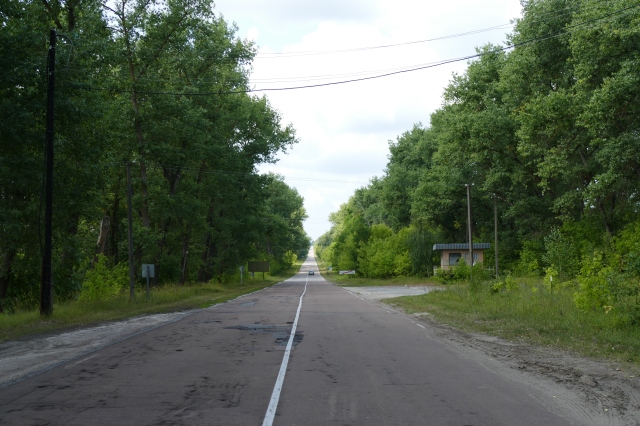
The Tour
As I learnt on a tour of Chernobyl, there’s actually a whole lot more to the exclusion zone than just the nuclear reactor and the Ferris wheel that is an eerie symbol of abandonment. Here are some of the highlights from a 1-day tour of Chernobyl. If you’re feeling really brave, you can visit for 2 or even 4 days.
Some illegal tourists choose to camp out indefinitely in Pripyat in the abandoned buildings. This isn’t advisable though, as radiation levels can reach up to 500 micro sieverts per hour in some parts of the town. To put that into perspective, anything above 0.3 is dangerous to the average human being.
The journey and first impressions
Kyiv’s tall grey skyscrapers gradually give way to small churches and village shops. These continue to drop off until you’re left with just fields and forests for the two-hour journey to the Exclusion zone’s first checkpoint. Wide open straight roads, which for the most part are completely empty, are lined with trees and stretch out far into the distance. Entering the exclusion zone is quite a low-key affair. A police officer checks your passport and scans your e-ticket, then you get a dosimeter which is also scanned.
The most memorable thing for me from the checkpoint was the birds. Little sparrows were everywhere. And they were so unafraid of humans! One sat on a branch and let me take pictures of it just feet away and stayed for a good few minutes. The disaster doesn’t seem to have had such a negative effect on nature here.
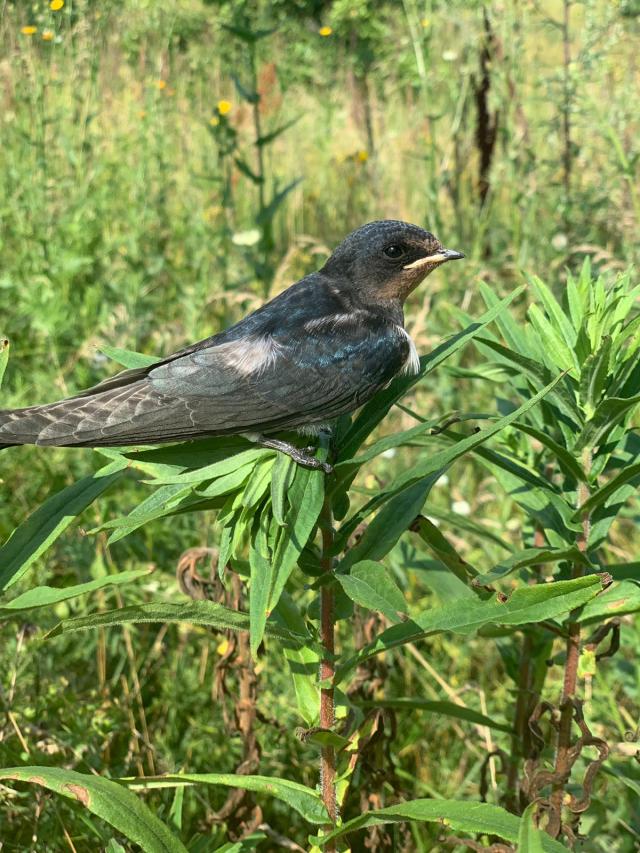
One of the most surprising things about Chernobyl is how ‘normal’ life is there. When you cross the checkpoint, you realise people actually live in the exclusion zone. 2,300 of them in fact. From the shopkeeper who coyly refused her photo taken, to the guys in army fatigues smoking cigarettes outside, to the lazy dogs sunbathing on the lawn, life isn’t any different here as it would be in any Ukrainian village.
Chernobyl Town, on the outskirts of the exclusion zone, is getting back to being a community. To say it’s thriving is going over the top a bit, but it was cool to see a shop, hotel, hostel, and gym and football pitch which are all used by the residents.
Many of these residents are tour guides, who are given a free flat. They also get their food and drink included. It’s illegal for tourists to drink alcohol here, but between 7 – 10pm, Chernobyl’s workers can have as much as they like – red wine and vodka are particularly popular as they supposedly protect against radiation. The local shop obviously does a roaring trade in both, as vodka section behind the till dwarfs that of the other household items and tinned foods. Although beer isn’t proven to do anything against radiation, there are still fridges full of it too!
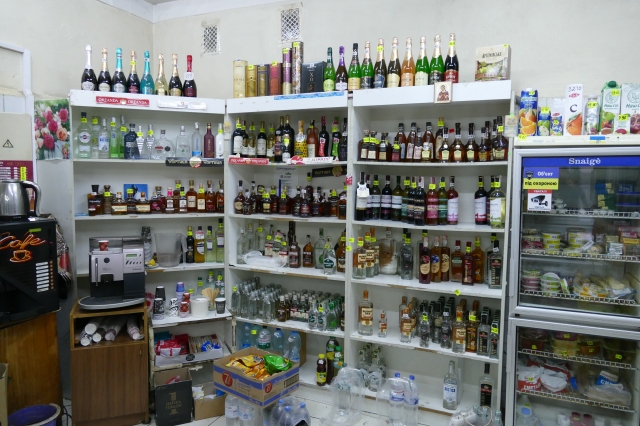
Chernobyl 2
‘We’re not allowed to go in here. But don’t tell anyone and we can go and take some pictures.’ Usually when you hear something this, you’re being let in on a little secret and it’s fun and mischievous and whatever else. At Chernobyl, it initially seemed more like a life or death decision. Do you want to go into a structure that has been rotting away since 1986, potentially contaminated with radiation, and to those who have more active imaginations, haunted?
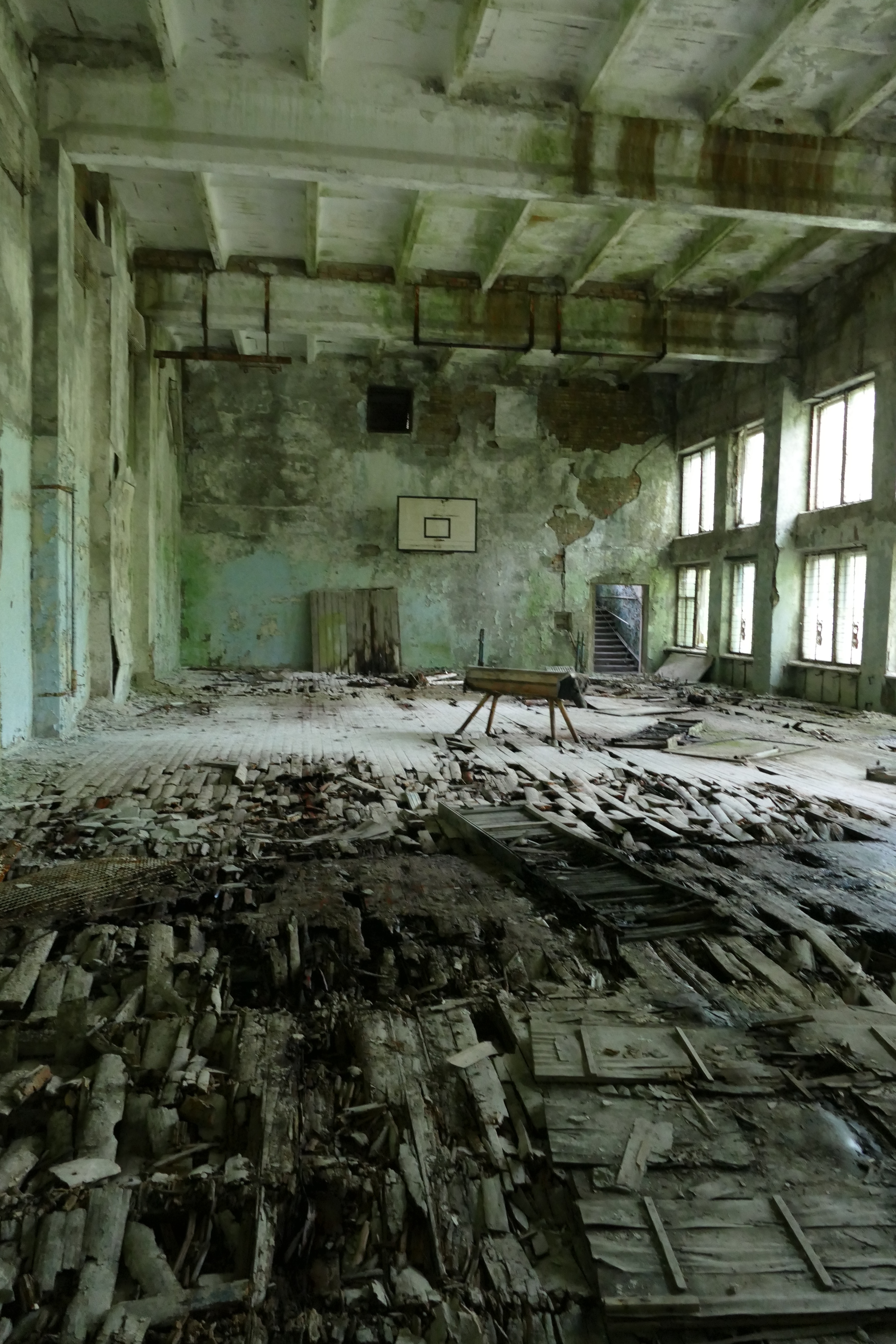
Chernobyl 2 was the first point where it became clear how much more there is to Chernobyl than meets the eye. Between Chernobyl Town and the power station, this ‘children’s camp’ was built. Why is ‘children’s camp’ in quotation marks? Well, in classic Soviet style, it was a massive military site masquerading as something much less threatening.
The real purpose of the site was to house the Durga 1 and 2 satellites, designed to detect intercontinental ballistic missiles and protect the USSR, relying on massive power generated Chernobyl’s reactors. They were one of three such types of satellites across the country. The satellites were impressive, just for their sheer scale. The intimidating architecture only got scarier when it creaked and groaned as though weary and tired, probably ready to fall over. It could be a good thing that the Ukrainian government has recently decided to decommission the satellites, although future visitors to Chernobyl won’t get the chance to appreciate these Goliath structures.
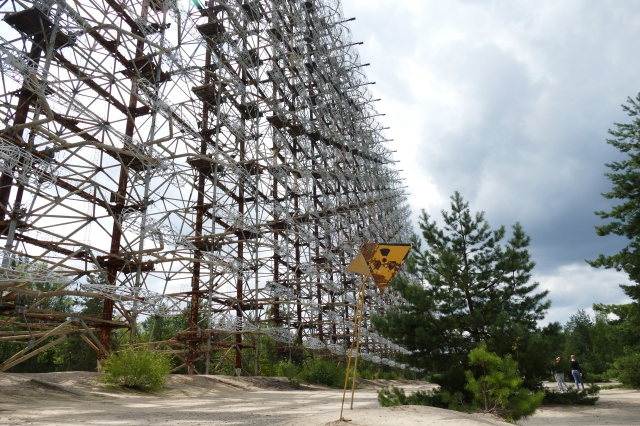
As this part of the tour was a faux children’s camp, it had to appear as such. It was quite clear that some parts of the buildings had been staged and set up. Creepy dolls perched photogenically on window sills, an old music classroom with the skeleton of an old piano and portraits of Soviet composers on the wall. Even though the room was a shell with rotten floorboards and smashed windows, the portraits were in pristine condition. As were the books that had been left lying on the table.
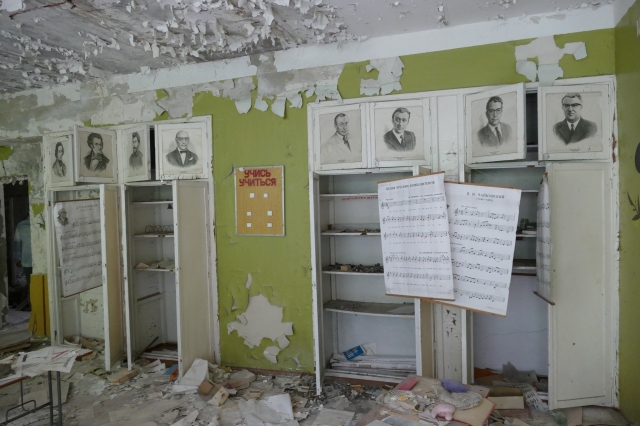
At first, I found this a little unsettling and disappointing. Chernobyl is a shocking place that doesn’t need any theatrics to hammer home how dreadful it was. Despite the initial disappointment, such a heavy emphasis on kids’ stuff (we also visited a play area and a kindergarten, all with their own different leftovers), truly makes you realise how many lost childhoods there were. Not just those in the immediate aftermath of the disaster, but the following generations too. I left this part of the tour feeling saddened but felt that I’d learned a lot more about a part of Chernobyl I’d never heard about or seen before.
On the road out of Chernobyl 2, the minibus’s path was blocked by an enormous eagle. Was it scared? Absolutely not. Even as the driver gently accelerated, the eagle stood its ground. The incredible bird finally decided to move out of the way, but it was the second case of animals I’d seen that day not being frightened of humans. Like I said, nature is thriving in the Exclusion Zone.
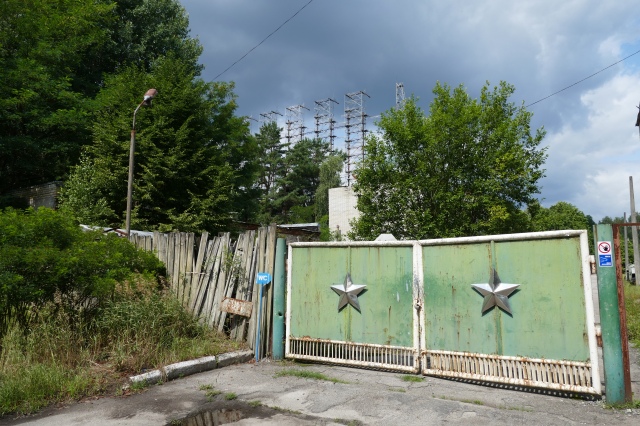
Reactor Number Four and the Nuclear Power Station
It seems crazy to say it at first, but the remains of the nuclear power station were underwhelming on first impressions. At the end of the day, the significance of Chernobyl is the disaster, not what’s left. It seems even crazier to say that when we stopped at a viewpoint it was incredibly peaceful. The bend in the river ahead of the huge dome covering reactor number 4 was picturesque and quiet. The first 3 reactors have been left pretty much as they were when the power station stopped being used.
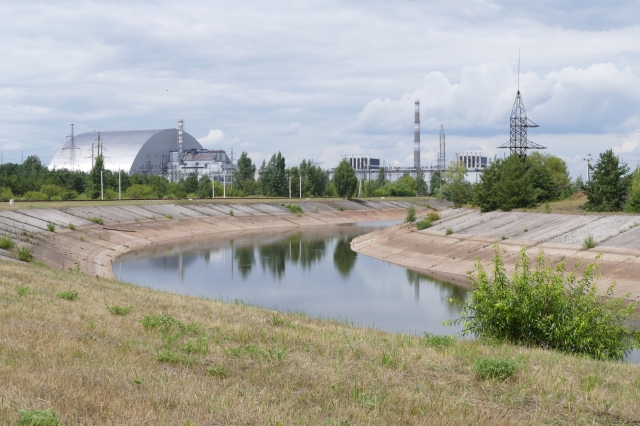
I thought that would be as close as we’d get to the power station, but I was wrong. Incredibly, there is a canteen at Chernobyl, less than a kilometre from reactor 4. The school dinner style room charges $10 for a meal, although judging the food from afar, I was glad that I’d picked up some supermarket sushi the night before. Even after I’d sat on it, it was still a tastier dish. On entering the canteen, you must pass through a radiation monitor, and if it goes red, it would be another instance where you require a ‘special shower’. You certainly wouldn’t be allowed in to enjoy the slop.
The canteen is partly there to serve the engineers who still work on the Chernobyl power station. Just a year after the disaster in 1987, Slavutych was built inside the exclusion zone where many who were displaced from Pripyat moved to. We didn’t visit but were able to see the train line and bridge leading to the small town, which is said to be another Soviet Utopia. Just like Pripyat!
Again, I thought the canteen would be as close as we’d get to reactor 4, but incredibly you can be within a couple of hundred metres of it now that the dome has been erected. The radiation was about 1 micro sievert per hour, only 3 times higher than the daily dose. Obviously, you still wouldn’t want to stick around for long. This was probably the most sombre part of the tour. It wasn’t just being so close to the centre of the disaster, but also the monument to the firefighters of Chernobyl and Pripyat that stands by the reactor, who make up most of the number of the official Soviet death toll.
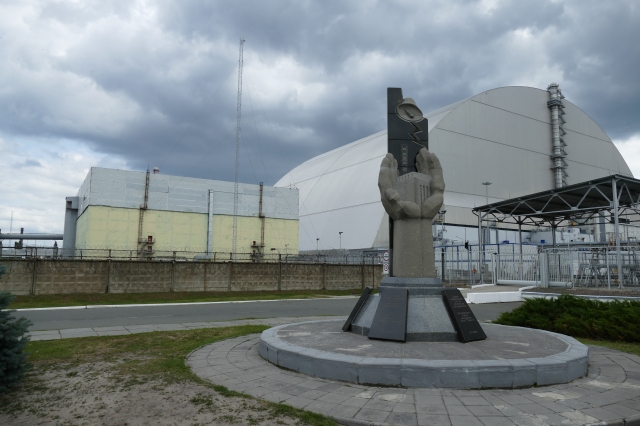
Pripyat
After leaving the area around the power station, we crossed the Bridge of Death and into the ghost town of Pripyat, which was without a doubt the best part of the tour. This town once housed the workers of the Chernobyl power plant and their families. Although this part is common knowledge when it comes to the disaster, many of the things I learned there weren’t.
The town will be uninhabitable for the rest of time, at least for humans anyway. Not nature though. It takes looking at original photographs of Pripyat to realise just how much it has been reclaimed. What were once wide-open boulevards are now overgrown with greenery to the point that you can’t see the roads anymore. Trees have grown through the ironwork of gates, and paths have had to be carved through the forests that now cover the remnants of football pitches, public squares, and parks. I found myself questioning how nature could have reclaimed Pripyat so quickly, as the trees seemed too big and all-consuming to have only been there for 30 years.
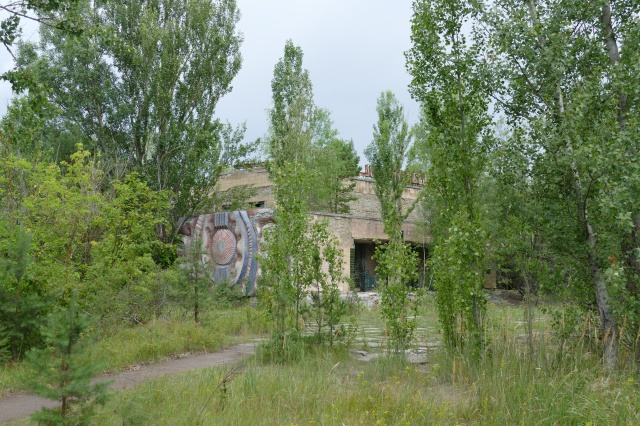
Navigating Pripyat is like a treasure hunt, with each path through the trees uncovering a hospital, a school, or an apartment building. The residents now are foxes and the occasional brown bear, which come out when the majority of tourists have safely gone back to Kyiv in their buses.
Now, a little more about the illegal tourism I mentioned in the introduction. People actually ‘break in’ to the exclusion zone and sleep in the abandoned buildings. Now, these were creepy in the afternoon sunlight. How anyone could voluntarily come here at night and sleep is beyond me. I don’t know if fright or radiation (there are some parts where the dosage is way, way over the safe limit) would get you first. Although Chernobyl is an incredible experience, I can’t imagine this being a good way to see it in any way at all.
Almost the last part of the tour was Pripyat’s forgotten amusement park. It was sad to learn that the wheel has never been ridden, and the dodgem cars sat frozen in time. Originally constructed for the festivities of labour day on the 1st May 1986, 4 days after the accident, the abandoned wheel has become the most prominent symbol of Pripyat as a ghost town. There’s a part of the structure where the radiation is 500 micro sieverts per hour – the healthy amount for a human is 0.3. Needless to say, after the guide showed this impressive number on the Geiger counter, we swiftly moved far, far away.
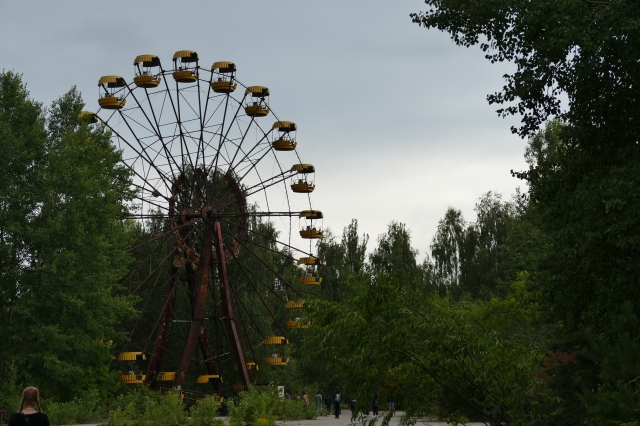
It wasn’t just the wheel that was meant to open for Labour Day – the newly formed Pripyat football team were due to inaugurate their new stadium with a game against the most successful Soviet club in European football at that time, Dynamo Kyiv. By that time, the wind had changed and those in Kyiv were starting to feel the effects of the deadly cloud that ended up scattered across much of Europe.
From the pictures and the stories of Pripyat, it was a utopian town full of hope and an exciting future ahead. No one could have predicted, even after the Chernobyl disaster, that it would become what it has today. Visiting was a truly unforgettable and sobering experience. It may sound odd, but you can’t quite put your finger on what’s unusual about Pripyat at first. Yes, it’s the site of a nuclear disaster and it’s now shrouded with nature, but that’s not it. It’s the silence. You don’t realise how truly and eerily quiet it is here. But once you do, it stays with you.
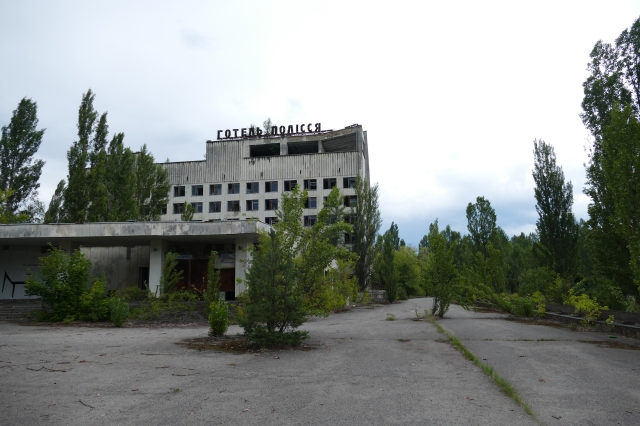
Final Thoughts
A lot of people would be uncomfortable at the prospect of visiting Chernobyl. There are a couple of reasons for this – the first being safety. Well, after 30 years the area isn’t completely safe but if you’re there for a day it’s unlikely that any danger will come to you as long as you listen to your guide and follow the safety instructions given at the beginning of the day. You’ll have a dosimeter throughout the day and when you leave your clothes will be checked for radiation. If you’re over the recommended safety limits, you’ll be given a ‘special shower.’ I’m not sure what it is, but our guide did say that they hurt. Luckily, I didn’t have to find out.
The other reason that visiting Chernobyl is controversial is a much more complex one. Although the official death toll published by the Soviet Union stands at 31 and is made up of power plant workers and firefighters who perished on the night of the event itself. It’s impossible to come up with a final figure on how many people were not only killed as a result of Chernobyl, but had their lives dramatically altered. According to the Chernobyl Museum in Kyiv, 2.8 million people directly suffered from the disaster, 750,000 of those being children. Over 100,000 people have been left disabled, and thyroid cancer increased 10 x over. Children have been born with deformities from radiation in the years following the accident. A combination of all these things mean that many people would consider it too overwhelming to even consider visiting.
However, humans are drawn to tragedy. Think about some other well-known tourist attractions around the world. The Roman Colosseum saw slaves fed to wild animals and gladiators fight each other to the death. Over 1 million people died at Auschwitz. You can buy ‘skip the line’ tickets to visit Ground Zero, a cataclysmic event that occurred less than 20 years ago (at the time of writing).
It’s not just tourism, tragedy is interwoven in our daily lives. We watch true crime documentaries about Madeleine McCann and Ted Bundy on Netflix. We are drawn to the macabre. Chernobyl is almost a unique disaster, and we haven’t witnessed anything of this scale or power, meaning the idea of a trip here can seem like too much. That doesn’t mean you shouldn’t visit, but it’s important to remember where you are and be respectful.
A tour into the exclusion zone gives you an insight into not only what life was like before the explosion, but also how it is now. All through the zone, it’s now incredibly peaceful, making it seem impossible that such a horrendous event occurred here. There were times when I felt I shouldn’t be there, times where I was shocked and horrified, and other times when I was fascinating and enthralled by all the new stuff that I’d learned. It may not be for everyone, but I can’t recommend visiting enough. It’s probably one of the best travel experiences I’ve ever had, anywhere.
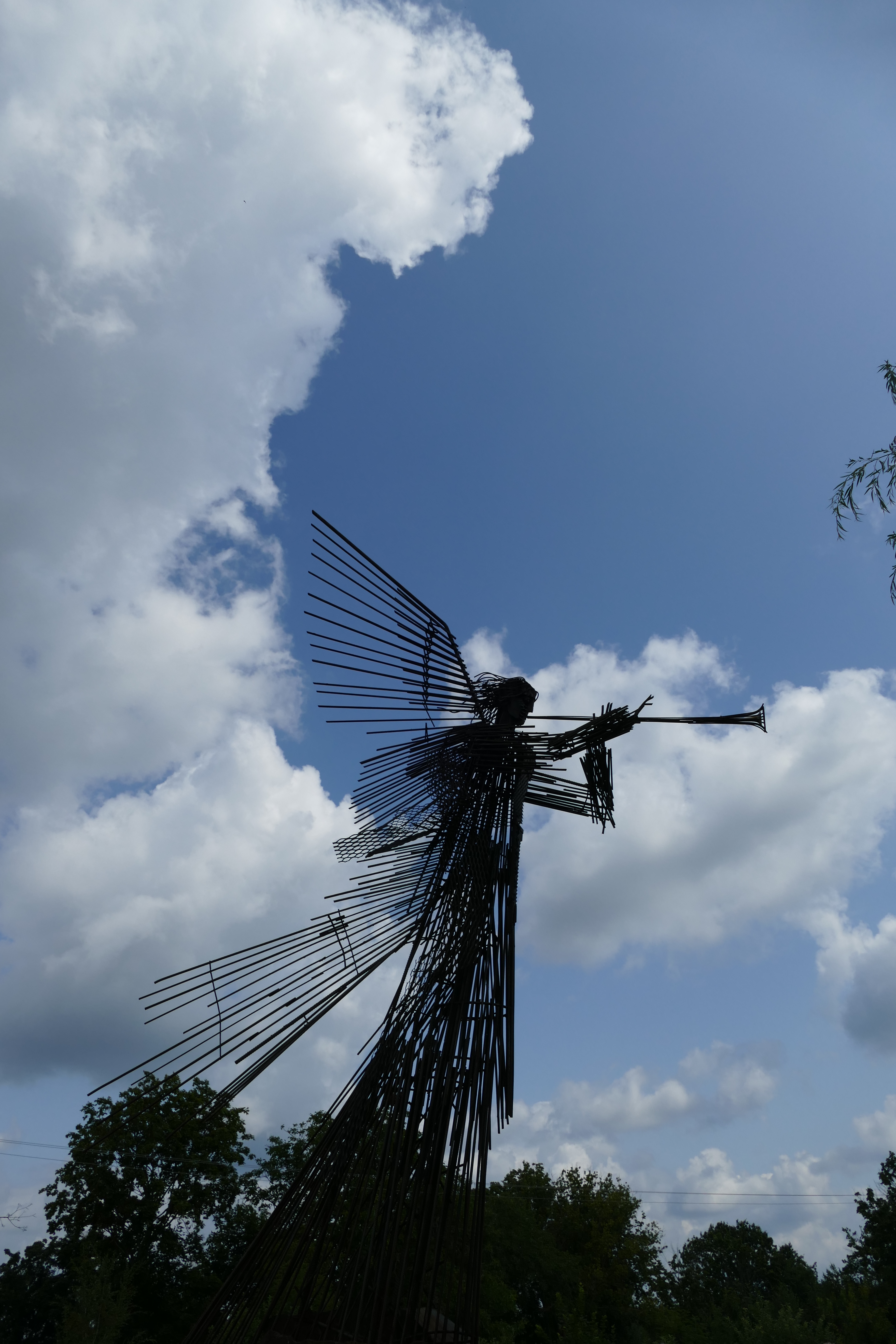
How to visit Chernobyl
You can only visit Chernobyl as part of a guided tour, it’s illegal (not to mention extremely difficult) to enter the exclusion zone alone. It’s a good idea to try and arrange your tour a few weeks before, and you’ll need your passport to enter the zone. Most Kyiv hotels and hostels will be able to help you find a tour company. Thanks to government regulation, you’re unlikely to find a dodgy tour company. Tours can cost anything from £70 for 1 day when booked weeks in advance. If you book last minute (which I wouldn’t recommend), it’ll probably cost double that.

